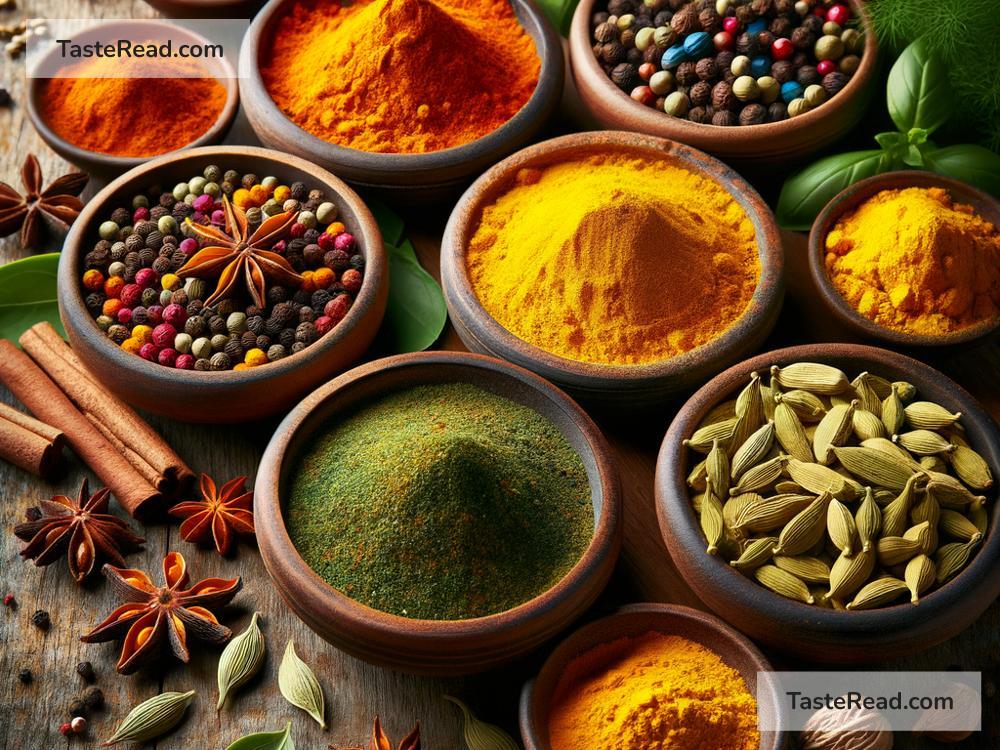Unique Spices Used in Indian Cuisine: A Flavorful Tour
Indian cuisine is famous worldwide for its bold flavors and vibrant colors. It stands out because of its unique spices, which not only enhance the taste of food but also serve as natural remedies for various health conditions. Each spice has its own personality, and together they create the harmonious, rich flavors that people love about Indian food. In this blog, we’ll explore some of the unique spices used in Indian cooking and their role in shaping the country’s culinary identity.
The Heart of Indian Cuisine: Spices
Spices are the soul of Indian cooking. They add aroma, taste, and texture in subtle and powerful ways. Most Indian households have a spice box known as “masala dabba,” which contains small containers of everyday spices used to prepare meals. While some spices, such as turmeric and chili powder, are globally recognized, others are less familiar. Let’s dive into some of the more unique spices that might surprise you!
1. Asafoetida (Hing)
Asafoetida, commonly known as “hing,” is a resin-like spice with a strong, pungent smell. When raw, its odor can be overwhelming, but once cooked, it transforms into a warm, savory flavor. It is often used in recipes to add depth to dishes, especially vegetarian meals like lentils and curries. Asafoetida is also praised for its digestive benefits and is often included in recipes to prevent bloating. In North Indian cuisine, a pinch of asafoetida is added to tempering, enhancing the dish’s overall flavor.
2. Black Cardamom (Badi Elaichi)
Black cardamom is larger and smokier than its cousin, green cardamom. While green cardamom is sweet and aromatic, black cardamom has a bold, earthy flavor with hints of resin and menthol. This spice is often used in biryanis, meat curries, and slow-cooked dishes to bring out deep, rich flavors. It also helps balance the heaviness of oily foods and adds a distinct aroma that makes Indian dishes irresistible.
3. Fenugreek Seeds (Methi)
Fenugreek seeds, called “methi,” are small and golden, with a slightly bitter taste. While the seeds are used in tempering or ground into spice blends, fenugreek leaves are also widely used in Indian dishes. Methi is a crucial ingredient in curries, pickles, and spice mixes like garam masala. Its bitter-sweet flavor balances rich and creamy dishes, such as butter chicken and dal makhani. Fenugreek is also known for its health benefits, particularly in regulating blood sugar levels.
4. Amchur (Dried Mango Powder)
Amchur is a powdered spice made from dried, unripe mangoes. While it might not be as celebrated as turmeric or cumin, it is one of the most unique spices used in Indian cuisine. It adds a tangy, fruity flavor to dishes, making it perfect for stews, curries, and chutneys. Amchur is especially beloved in North Indian cooking, where it is used in popular snacks like chaat, pakoras, and samosas. It offers an alternative to fresh lime or vinegar when adding sourness to a dish.
5. Nigella Seeds (Kalonji)
Nigella seeds, known as “kalonji,” are small black seeds with a mild onion-like flavor. They might resemble black sesame seeds, but their flavor is completely unique. Kalonji is often sprinkled on breads like naan and paratha, giving them a distinctive taste and texture. It is also used in spice blends and pickles, especially in Bengal’s famous “panch phoron,” a five-spice mix. Nigella seeds are known for their nutritional benefits and may aid digestion and boost immunity.
6. Stone Flower (Dagad Phool)
Stone flower, or “dagad phool,” is one of the most mysterious spices in Indian cooking. Found growing on rocks and trees, it’s actually a type of lichen. It is often used in biryanis, gravies, and spice blends to impart a smoky, woody flavor. Stone flower is particularly popular in South Indian and Maharashtrian cuisine, where it adds depth and complexity to dishes. Though not well-known globally, it is an essential ingredient in many regional Indian recipes.
7. Kokum
Kokum is a fruit-based spice widely used in the coastal regions of India, especially in Konkani and Goan cuisine. It has a tart, sour taste and is used in curries, soups, and drinks. Kokum is often added to fish and seafood dishes to bring out their natural sweetness. It also makes refreshing beverages like “kokum sherbet,” which is enjoyed during hot summer months. Apart from its culinary use, kokum is praised for its cooling properties and ability to reduce acidity.
8. Curry Leaves
Though technically not a spice, curry leaves are a vital ingredient in Indian cooking. These fragrant green leaves are widely used in South Indian recipes such as sambhar, rasam, and dosa chutney. Curry leaves add a subtle citrus flavor and a fresh aroma to dishes. They are usually tempered in hot oil with mustard seeds and asafoetida to release their flavor. Besides being delicious, curry leaves are known for their medicinal properties, supporting hair health and improving digestion.
Conclusion
Indian cuisine thrives on its diversity, and its spices play a crucial role in making each dish unique and flavorful. From the tanginess of amchur to the smokiness of black cardamom, these spices create a culinary experience that’s unlike anything else. While many of these spices have a rich history, they also carry wonderful health benefits, making Indian food not only tasty but also wholesome.
So, the next time you enjoy an Indian meal—whether it’s a fiery curry or a mild dal—appreciate the artistry behind those spices. They are more than mere ingredients; they are a reflection of India’s vibrant culture, tradition, and ingenuity.


